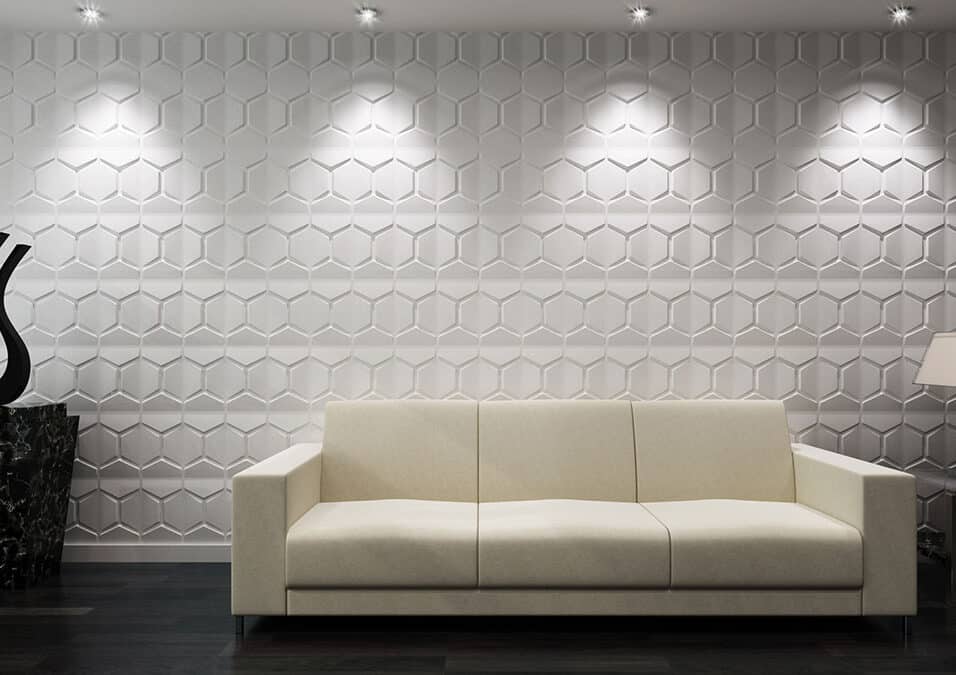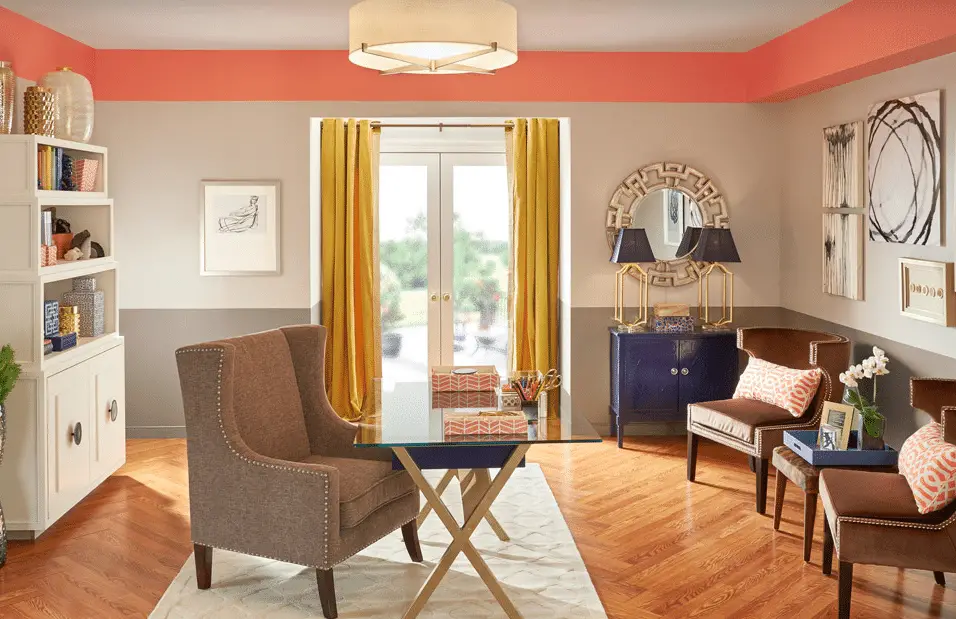How Often To Paint Interior Walls
How Often To Paint Interior Walls: Painting the interior walls of your home is a great way to refresh the look and feel of your space. Whether you’re looking to update the color scheme or simply cover up scuffs and marks, a fresh coat of paint can make a big difference. But how often should you be painting your interior walls?
The frequency at which you should paint your interior walls depends on a variety of factors, including the type of paint used, the amount of wear and tear your walls experience, and your personal preferences. Generally, most interior walls will need to be repainted every 5 to 10 years.
Firstly, consider the condition of your walls. If you notice significant fading, peeling, or cracking, it’s a good sign that it’s time for a fresh coat of paint. These issues can occur over time due to exposure to sunlight, moisture, or general wear and tear. By addressing these problems early on, you can prevent further damage and keep your interior walls looking their best.
Secondly, take into account your personal style preferences. If you’re someone who likes to stay on top of the latest design trends, you may find yourself wanting to repaint more frequently. Similarly, if you’re someone who enjoys experimenting with different colors and finishes, you may choose to repaint more often to keep your space feeling fresh and exciting.

How often should internal walls be painted?
every 3-5 years
While it differs from room to room due to varying degrees of traffic and usage, the general rule is you should repaint your house interior every 3-5 years. Keep in mind that not every household is the same. When it comes to maintaining the appearance and condition of your home, painting the internal walls is an essential task.
In high-traffic areas, such as hallways, living rooms, or children’s bedrooms, you may need to repaint more frequently. These areas are more prone to scuffs, marks, and general wear and tear, so it is a good idea to repaint them every 2-3 years. Additionally, if you have young children or pets who are more likely to cause damage to the walls, you may need to repaint more often.
It is also worth considering the color of your walls when determining how often to paint them. Lighter colors tend to show dirt and marks more easily, so they may require more frequent painting compared to darker colors. Similarly, if you have textured walls, they may require more frequent painting to maintain their appearance.
How long does interior paint last on the wall?
between 5 to 10 years
If maintained well, your interior paint job will last between 5 to 10 years. Washable paints like Berger Easy Clean Fresh last longer since they offer ultimate protection and longevity. Humidity, sunlight and rain can lead to chipping, peeling and fading.
Interior paint can significantly enhance the appearance of a room, giving it a fresh and vibrant look. However, over time, paint can start to deteriorate, leading to a less appealing aesthetic. The longevity of interior paint on the wall depends on various factors, including the quality of the paint, the condition of the wall, and the level of wear and tear the room experiences.
The quality of the paint plays a crucial role in determining how long it will last on the wall. High-quality paints are formulated to be more durable and resistant to fading, chipping, and peeling. These paints often contain additives that enhance their longevity, such as UV protection and anti-microbial properties. The condition of the wall also affects the lifespan of interior paint. The level of wear and tear a room experiences can impact how long the paint lasts.
How many times can you paint interior walls?
You can paint your walls in your home as often as you like. If you notice a buildup of paint, you can sand the walls down to remove it before the project. You also have the option of using a paint stripper to clean your walls before you apply a new coat of paint. When it comes to painting interior walls, the frequency at which you can paint them depends on several factors.
The quality of the paint is an important factor to consider when determining how many times you can paint interior walls. On the other hand, lower-quality paints may require more frequent touch-ups or repainting.
The condition of the walls also plays a role in how often you can paint them. If the walls are in good condition with no major imperfections, they can be painted more frequently. However, if the walls have cracks, holes, or other damage, they may need to be repaired before painting. In some cases, extensive repairs may be necessary, which can limit the number of times you can paint the walls.
The amount of wear and tear that the walls experience is another factor to consider. High-traffic areas, such as hallways or children’s rooms, may require more frequent painting due to scuffs, stains, or other damage. Rooms that are used less frequently, such as guest bedrooms, may not need to be painted as often.
How often should bedroom walls be painted?
If forced to quantify it, most experts recommend painting adult bedrooms every 10 years. However, children’s bedrooms are different. Most children’s bedrooms need painting every 2-3 years.
Maintaining the appearance and condition of your bedroom requires painting the walls. Wall paint is a major consideration. Paint durability and lifetime vary. Superior paints last longer and require less frequent re-painting. Paint finish also affects durability. For a clean look, the walls may need to be repainted more often.
Personal style and choice are also important. To reflect current trends or create a new atmosphere, some people change their bedroom wall colors more often. In these instances, painting the walls every few years or more often may be desirable.
Lastly, it is important to inspect the condition of the walls regularly. If you notice significant wear and tear, such as peeling paint, cracks, or water damage, it is essential to address these issues promptly. Ignoring such problems can lead to further damage and may require more extensive repairs or repainting in the future.
How often should I paint my ceiling?
How Often Should I Paint My Ceilings? Different types of paint have varying durability and longevity. For instance, oil-based paints tend to last longer than water-based paints.
The condition of your ceiling is another crucial factor to consider. This is because moisture can cause the paint to peel or crack, leading to an unsightly appearance. If you notice significant signs of wear, such as scratches or dents, it may be time to repaint your ceiling. On the other hand, ceilings in less frequently used rooms may require less frequent repainting. However, as a general guideline, experts suggest repainting interior walls every 3 to 5 years.
Regular maintenance and upkeep of interior walls is essential to keep them looking fresh and vibrant. Over time, walls can accumulate dirt, grime, and scuff marks, which can make the paint appear dull and worn out.
Additionally, repainting interior walls can also help to protect them from damage. Paint acts as a barrier against moisture, mold, and mildew, which can cause structural issues if left unchecked. By repainting regularly, you can ensure that your walls are adequately protected and prevent any potential damage from occurring.
How frequently should interior walls be repainted?
The recommended frequency for repainting interior walls depends on several factors such as the quality of the paint used, the amount of wear and tear the walls experience, and personal preference. However, as a general rule of thumb, experts suggest repainting interior walls every 3 to 5 years.
Regular repainting helps maintain the aesthetic appeal of your home and keeps the walls looking fresh and clean. Over time, walls can accumulate dirt, stains, and scuff marks, which can make the paint appear dull and worn out. Repainting at regular intervals not only enhances the overall appearance of your interior but also protects the walls from damage caused by moisture, sunlight, and other environmental factors.
What is the ideal interval between painting interior walls?
When it comes to painting interior walls, the ideal interval between repaints can vary depending on several factors. However, a general rule of thumb suggested by experts is to repaint interior walls every 3 to 5 years. Regular maintenance and cleaning can also play a role in determining the ideal interval between painting interior walls.
The type of paint used can also impact the interval between repaints. High-quality paints with better durability and washability may last longer and require less frequent repainting compared to lower-quality paints. Additionally, the color of the paint can also influence the need for repainting. Darker colors tend to show wear and tear more easily, and may require more frequent touch-ups or repainting.
How often do experts suggest repainting interior walls?
Experts generally recommend repainting interior walls every 3 to 5 years. However, the frequency of repainting can vary depending on several factors such as the quality of the paint used, the amount of wear and tear the walls experience, and the overall condition of the walls.
Regular maintenance and cleaning can help extend the lifespan of the paint and delay the need for repainting. It is important to regularly clean the walls to remove dust, dirt, and stains that can accumulate over time.
What is the general rule of thumb for painting the interior walls of a house?
When it comes to painting the interior walls of a house, the general rule of thumb is to repaint them every 3 to 5 years. This timeframe is based on several factors such as the quality of the paint used, the amount of wear and tear the walls experience, and the overall condition of the walls. However, it’s important to note that this is just a guideline and the actual frequency may vary depending on individual circumstances.
Additionally, high-traffic areas such as hallways or children’s rooms may require more frequent repainting due to increased wear and tear.
Proper preparation before painting is also crucial to ensure the longevity of the paint job. This includes cleaning the walls thoroughly, repairing any damage, and applying a primer before painting. By following these guidelines and regularly maintaining the interior walls, homeowners can keep their walls looking fresh and vibrant for years to come.

Conclusion
One of the most important factors to consider when determining how often to paint interior walls is the type of paint used. High-quality paints tend to last longer and require less frequent repainting compared to lower-quality paints. Additionally, the finish of the paint can also affect its durability. For example, glossy finishes are more resistant to stains and easier to clean, making them a good choice for high-traffic areas that are prone to dirt and smudges.
The condition of the paint job is another crucial factor to consider. Regular maintenance and touch-ups can help extend the lifespan of the paint job and delay the need for a full repaint.
Ultimately, the decision of how often to paint home interior walls will depend on personal preferences and the desired appearance of the space. Some individuals may prefer to repaint more frequently to keep their walls looking fresh and updated, while others may be content with a longer interval between paint jobs. It is important to regularly inspect the walls for any signs of damage or wear and make touch-ups as needed to maintain the overall condition of the paint job.








